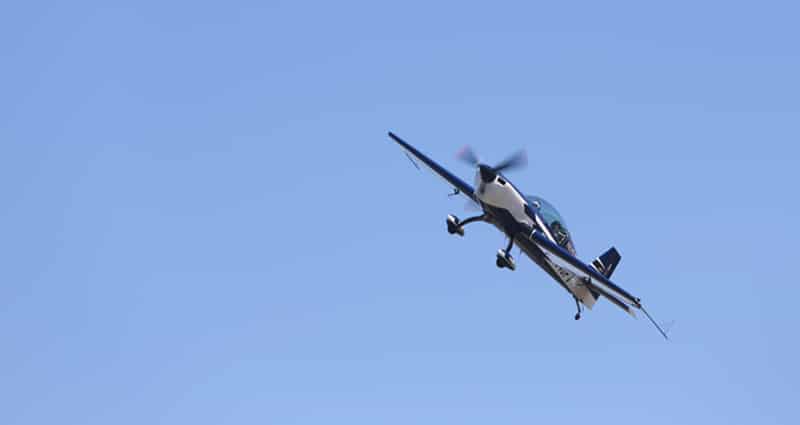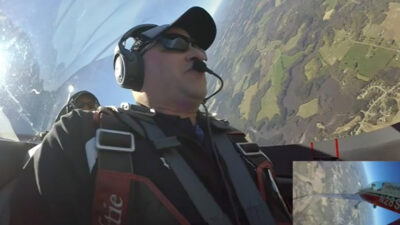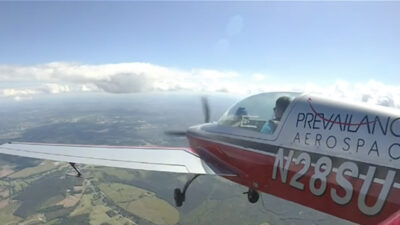UPRT Skills Transferability: Effectively Addressing the #1 Killer in Aviation Today

Why would I train in an aerobatic airplane when I normally fly a corporate jet? Or a twin turboprop? These are common questions to which Upset Prevention and Recovery Training (UPRT) instructors must respond. The answers are simple. Although the ideal training environment would be in the aircraft each pilot flies on a daily basis, the safety margins are too low to test the edge of the envelope with stalls and spins in corporate jets, twin turbos or any other flying machine where the POH prohibits spins and/or exceeding critical angle of attack with unusual attitudes.
The good news is that the laws of aerodynamics are shared across every aviation platform. “Exceed the critical angle of attack and the surface will stall and lift will decrease instead of increase. This is true regardless of airplane speed or attitude or wing shape.”1 A solid understanding of the physics of flight can be applied from one flying machine to another.
Applying UPRT Knowledge Across All Aviation Platforms
If a pilot can gain a better understanding of the aerodynamics and physics of flight with on-aircraft UPRT, this knowledge can be applied across all aviation platforms.
“The situation is analogous to initial instrument training. We routinely teach pilot candidates initial instrument proficiency in lower performance aircraft and simulators with the understanding that those instrument skills will largely transfer to other aircraft on which their specific handling and performance characteristics will be learned. The same concept applies to the transfer of skills in UPRT.”2
UPRT emphasizes the fundamentals of aerodynamics, energy management, mitigation of the effects of surprise and startle, and then the application of that knowledge to daily flight operations in any given platform. “A pilot who is aware of the energy and flight path is less likely to be startled and therefore, more likely to deal with the situation with controlled inputs versus reactive responses.”1
Simulator Upset Training Critical for Skills Development
Most UPRT providers recommend recurrent simulator and academic training, in conjunction with on-aircraft training. Generally, on-aircraft UPRT occurs first in the sequence of training events. Once UPRT is completed in a safe, stable platform with a large operating envelope, pilots can then test their knowledge in their primary aircraft simulator. The simulator portion of upset training is critical to obtain a better feel for the required control inputs and practice required to develop muscle memory and necessary skills to recover in that cockpit.
Regardless of what aircraft you fly, a better understanding of aerodynamics, stalls and spins is paramount. Many of the worst aviation accidents over the last several decades could have been prevented with a better understanding of these concepts. The NTSB notes, “Sadly, the circumstances of each new accident are often remarkably similar to those of previous accidents. This suggests that some pilots are not taking advantage of the lessons learned from such tragedies that could help them avoid making the same mistakes.”3
Pilots Must Have a Fundamental Understanding of Flight Dynamics
Identifying a stall is easy in 1G flight at the prescribed stall speed, but with each introduced variable, the assessment grows more challenging. ICAO, Airbus, ATR, Boeing, Bombardier and Embraer came together again with Revision 3 of the Airplane Upset Prevention & Recovery Training Aid to emphasize, “Control inputs appropriate at one point in the flight envelope might not be appropriate in another part of the flight envelope. Pilots must have a fundamental understanding of flight dynamics in order to correctly determine the control input(s) necessary.”1
Pilots need to:
1) fully understand the aerodynamics of unusual attitudes,
2) feel the physical attributes associated with recovery in a safe, stable training aircraft, and
3) take the time to apply their on-aircraft UPRT skills to their simulator environment to effectively transfer skills from one flying machine to another.
This added component of on-aircraft UPRT, and the ability to transfer skills from one aircraft to another, is the only way that the aviation industry will effectively address the #1 killer in aviation today.
References:
1 Airplane Upset Prevention and Recovery Training Aid (Rev 3, 2017). Retrieved from ICAO website on June 1, 2017: https://www.icao.int/safety/LOCI/AUPRTA/index.html
2 Brooks, R., Loss of Control in Flight – Training Foundations and Solutions, European Airline Training Symposium, 2010. Retrieved on June 1, 2017: http://understandingaf447.com/extras/Brooks-Loss_Of_Control_In_Flight_Training_Foundations_And_Solutions.pdf
3 NTSB Safety Alert (2013, revised 2015). Prevent Aerodynamic Stalls at Low Altitude. Retrieved from the National Transportation Safety Board website on June 1, 2017: https://www.ntsb.gov/safety/safety-alerts/Documents/SA_019.pdf

Prevailance Aerospace is a UPRT provider that has been working with corporate, government, and general aviation pilots to improve safety in the aviation industry. Prevailance Aerospace uses Extra 300 Series Aircraft for training and our pilots are experienced aviation professionals from various military and general aviation backgrounds. We know that successful aviation endeavors are accomplished through an uncompromising commitment to safety, impeccable professionalism, tremendous attention to detail, and constant improvement.
http://prevailanceaerospace.com
© 2025 Prevailance Aerospace. All Rights Reserved.
Next ArticleRelated Posts

Rise Up for the Next Generation
There is no doubt in my mind that flying is the way mankind is meant to travel, yet the continued success and growth of the industry requires a refined approach to safety. As someone who flies commercially and with a new interest in a career in aviation, I want the reassurance that the pilot in command (PIC) and crew are adequately prepared if and when an aircraft ends up in an upset.

Three Considerations That Set Pilots Up for Success
Constantly reviewing aviation accidents and incidents is challenging. As an instructor, it is not only the injuries and fatalities that make it hard, but the sheer magnitude of avoidable aspects of each incident. These safety reports prove that every Pilot in Command (PIC) is accountable for what transpires.

